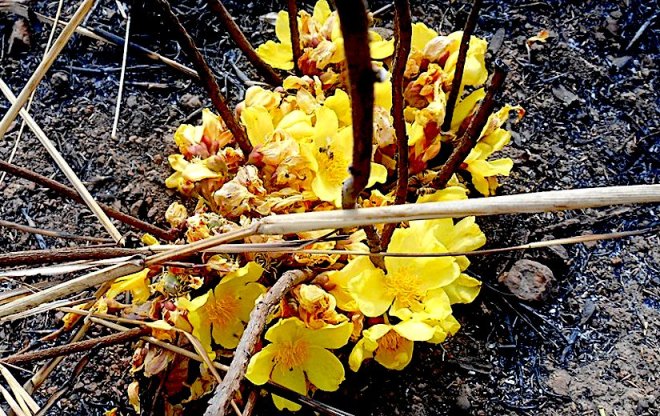Photo credit: Google
Cochlospermum planchonii | by Warren McCleland

The leaf anatomy of the species of Cochlospermum Kunth.(Cochlospermaceae) in West Africa
by Ogundipe O. T., Olatunji O. A. (1991)
Obafemi Awolowo University, Department of Botany, Ile-Ife, Nigeria
in Feddes Repertorium 1991; 102: 183-187 –
Abstract
The leaf anatomy of the species of Cochlospermum Kunth occurring in West Africa is described.
The stomata occur only on the lower surfaces of the leaves. The vasculature in the petiole is of medullated type in C. planchonii, while it is are with adaxial traces in C. tinctorium. Angular collenchyma is present in the petiole. Epidermis and mesophyll are uniseriate. Unicellular hairs occur on both surfaces of C. planchoni but vary in density.
The two species can therefore be limited on the basis of anatomical characters.

You must be logged in to post a comment.